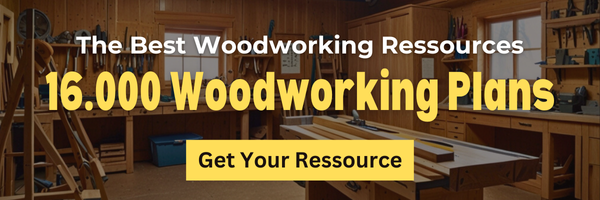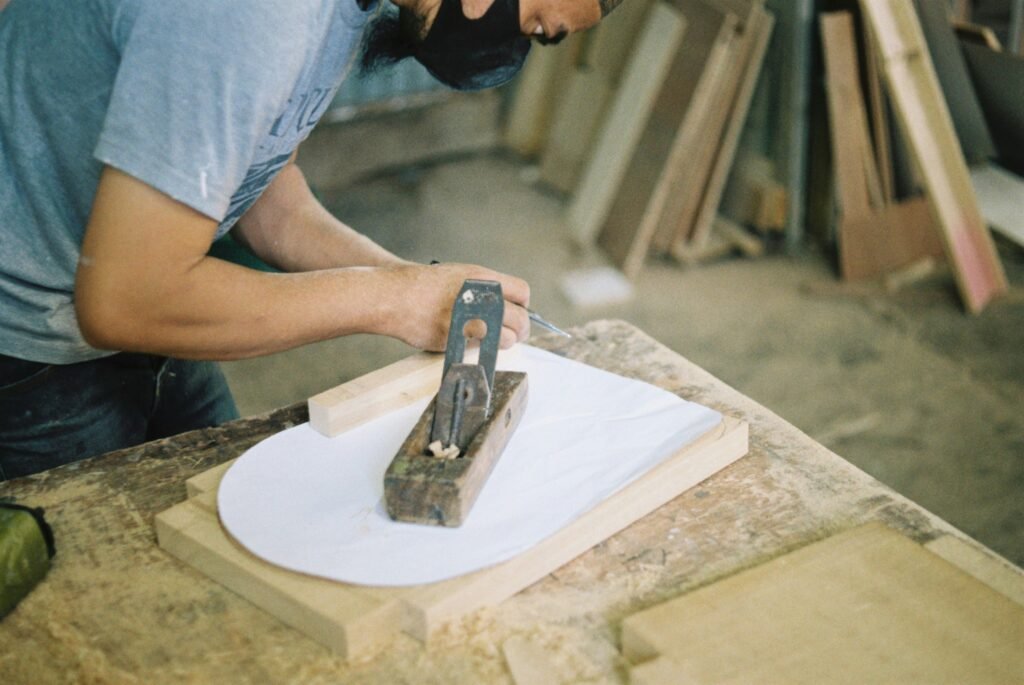Woodworking is an incredibly rewarding hobby that allows you to create beautiful, functional pieces with your own hands. However, getting started requires having the right set of tools to ensure your projects turn out as envisioned. Whether you’re new to woodworking or looking to expand your tool collection, this guide will walk you through the essential tools you’ll need to embark on your woodworking journey.
Part 1: Introduction to Essential Woodworking Tools
What Are the Core Tools for Woodworking?
Woodworking tools can be broadly categorized into power tools and hand tools. Both types of tools serve specific purposes in the process of shaping and finishing wood, and having a balance of each is essential for completing various projects. Power tools like circular saws, power drills, and routers speed up large tasks, while hand tools such as chisels and hammers allow for precision and detailed work. Understanding the difference between these tools is key to selecting what you need based on your project.
Why Choosing the Right Tools Matters
Using the right tools ensures the quality and efficiency of your work. Investing in well-made tools is important, as they last longer, perform better, and improve the quality of your woodworking. Even if you’re starting with smaller, DIY projects, picking the right tools can significantly reduce frustration and ensure that your finished pieces are durable and professionally crafted.
Part 2: Essential Power Tools for Woodworking
1. Power Drill: Your First Essential Power Tool
A power drill is one of the most versatile tools in any woodworker’s kit. Whether you’re drilling holes or fastening screws, this tool is essential for both small and large woodworking projects. Cordless drills provide mobility, making them a popular choice for DIYers and professionals alike. Make sure to invest in high-quality drill bits to get the most out of your power drill. A power drill with variable speed control is ideal for precision work and allows for greater versatility across different types of projects.
2. Circular Saw: The Versatile Cutting Tool
The circular saw is another must-have for any woodworker. Known for its ability to make quick, straight cuts through various types of wood, it’s perfect for cutting large sheets of plywood or lumber down to size. A corded circular saw provides continuous power, while a battery-powered model offers flexibility. With adjustable cutting depth and angle, a circular saw can handle a range of cuts, from rough framing to precision trimming.
3. Jigsaw: For Precision and Intricate Cuts
A jigsaw excels at cutting curves, angles, and intricate patterns that would be impossible with a circular saw. If your project requires detailed, artistic designs, such as cutting out curved shapes, the jigsaw is the go-to tool. It’s easy to maneuver and allows for freehand cutting, making it indispensable for custom woodworking.
4. Orbital Sander: Smoothing Surfaces Made Easy
To achieve a smooth, finished look on your wood projects, an orbital sander is essential. This power tool uses circular motion to quickly remove rough patches from wood, preparing it for staining or painting. With its efficient and even sanding action, an orbital sander saves time and provides a smoother finish than hand sanding, especially on larger surface areas.
5. Router: For Decorative Edge Cuts
A router is a versatile tool used for shaping edges, cutting grooves, and creating decorative finishes on wood. It’s particularly useful for making dovetail joints, cutting out intricate designs, and adding a professional look to furniture or cabinetry. For beginners, a plunge router or a fixed-base router is a good choice, as they provide control and precision for a wide range of woodworking tasks.
Part 3: Essential Hand Tools for Woodworking
6. Hammer: The Classic Hand Tool
No woodworking kit is complete without a hammer. Whether you’re driving nails, assembling pieces, or removing stubborn fasteners, this tool is used in nearly every project. A claw hammer is ideal for pulling nails and offers the right balance of weight and control. Keep a few different sizes on hand for various tasks.
7. Chisels: Precision for Detailed Carving
Wood chisels are perfect for carving, trimming, and fine-tuning your wood pieces. They come in various sizes and are used to remove small amounts of wood, allowing for precise detailing in your project. A sharp chisel is essential for clean cuts, whether you’re chiseling out mortises, dovetails, or decorative elements.
8. Block Plane: For Smoothing and Shaping Wood
A block plane is another indispensable tool for any woodworker. It allows you to smooth out rough edges, fine-tune joints, and shape small pieces of wood. Whether you’re working on finishing touches or fixing imperfections, a block plane gives you more control than sanders or saws.
9. Wooden Mallet: Gentle Impact Without Damage
A wooden mallet is often used with chisels to apply force without damaging the handle or the workpiece. Its soft material ensures that it won’t leave marks on your wood while providing enough power for precision strikes.
10. Measuring Tools: Squares, Tape Measure, and Marking Tools
Accurate measurements are crucial in woodworking. Having a combination square, tape measure, and marking tools will help ensure your cuts are precise and your assembly is flawless. These tools allow you to properly measure angles, lengths, and distances, preventing mistakes that could ruin your project.
Part 4: Specialty Tools for Advanced Woodworking
11. Thickness Planer: Smoothing Rough Lumber
A thickness planer is an invaluable tool for those looking to work with rough or reclaimed lumber. It allows you to plane down wood to a uniform thickness, creating a smooth and even surface. Whether you’re building furniture or cabinetry, a thickness planer will save you hours of sanding and shaping.
12. Jointer: Perfecting Edges for Seamless Joints
If you’re working with raw wood, a jointer helps create perfectly flat edges that can be glued together for seamless joints. This tool is particularly useful for making furniture, tabletops, and cabinets, where precise joints are crucial for strength and appearance.
13. Miter Saw: For Angled and Precision Cuts
A miter saw allows you to make precise angled cuts for trim work, molding, and framing. Whether you’re cutting at 45 degrees or making compound cuts, this tool is essential for projects requiring precise angles and repetitive cuts.
Part 5: Safety and Maintenance Tips for Woodworking Tools
14. Importance of Tool Maintenance
Maintaining your tools is critical to their performance and longevity. Regular cleaning, lubricating, and sharpening of your tools will ensure they stay in optimal condition and provide precise results. For power tools, check the cords, batteries, and motors regularly to avoid breakdowns during projects.
15. Safety Gear and Tips
Woodworking can be dangerous without proper safety precautions. Always wear safety glasses, ear protection, and dust masks when working with power tools or creating dust. Organize your workspace to prevent accidents and make sure to always follow the manufacturer’s safety instructions when operating machinery.
Part 6: FAQs on Woodworking Tools
What Are the Best Tools for Beginner Woodworkers?
For beginners, it’s best to start with basic tools such as a power drill, jigsaw, and orbital sander. These tools allow you to complete a wide variety of projects without overwhelming your budget. As you gain more experience, you can invest in more specialized tools like a router or planer.
Do I Need Power Tools or Hand Tools to Start Woodworking?
Both power tools and hand tools have their place in woodworking. Power tools are great for speeding up tasks and handling larger projects, while hand tools allow for detailed and precise work. Ideally, you’ll want a combination of both for the most versatility.
How Much Should I Budget for Essential Woodworking Tools?
You can start woodworking with a budget of around $500 for basic tools, but if you plan to invest in higher-quality tools or specialized equipment, your budget could easily reach $1,500 or more. It’s important to balance cost with quality to ensure your tools last.
How Do I Maintain My Woodworking Tools?
Regular maintenance is crucial for keeping your tools in good working order. Clean your tools after each use, sharpen blades and bits regularly, and store them in a dry environment to prevent rust. For power tools, ensure the moving parts are lubricated and that the electrical components are in good condition.
By following this guide, you’ll be well on your way to building a comprehensive toolkit for your woodworking needs. Whether you’re tackling DIY projects or pursuing professional woodworking, having the right tools and knowledge will make all the difference in your work.



